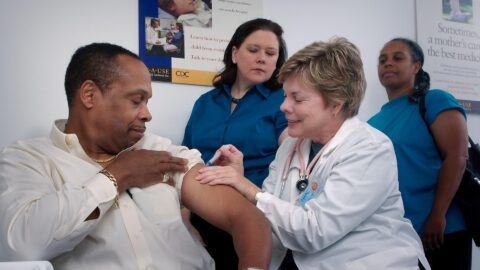Event Summary: Autonomous Vehicles and City Streets
By Jennifer Brody
On May 3, 2018, Civic Series Boston and the Boston Society of Architects (BSA) Urban Design Committee partnered to produce a timely event titled “Autonomous Vehicles and City Streets: Greenways or Gridlock?” Held at the BSA, the event included experts from the public sector and design firms who discussed the complex policy considerations that autonomous vehicles (AVs) present for urban transportation planning. The audience’s big takeaway: AV technology is a classic double-edged sword.
Arguably one of the greatest advantages of AVs is that driverless cars could reduce congestion on city streets. This is in part because parking lots and garages may become obsolete because, for example, a formerly parked car could be used to transport another rider while the owner of the vehicle is at work. If there are minimal parking spots in densely packed urban areas, more room is available to build green spaces and bike lanes. However, for AVs to reach their full “combatting congestion” potential, it is requisite that the public rideshare (or, better yet, share car ownership). This may prove challenging considering that the vast majority of people in the Boston area who use Transportation Network Companies (TNCs) like Uber and Lyft opt for more expensive private rides over less expensive shared rides.[1]Unfortunately, if our Brave New World is replete with private AVs, gridlock may only intensify.
While the advent of driverless cars offers many opportunities to improve city streets, the nascent technology also presents serious dilemmas. Perhaps most notably, if AVs become too accessible and affordable, people may be less inclined to walk, bike, or take public transit (which entails walking) to their destination.[2] We already see this happening with TNCs offering reduced price door-to-door service for the work commute.[3] In an age in which it is especially important for government to promote exercise, the convenience of AVs may undermine policymakers’ mandate to protect public health and wellbeing.
The crux of the aforementioned problems is appropriately aligning incentives in order to ensure 1) the public chooses rideshares over private cars and 2) rideshares do not wholly replace walking, biking, or transit alternatives. This could be accomplished through penalizing undesirable behavior. For example, by hiking up the price during rush hour, TNCs help discourage riders from ordering a car during heavy traffic times. Perhaps the same logic could apply to hailing a TNC for short distances: if riders are penalized with a higher fee, they may opt to walk fifteen minutes instead of Uber-ing. 
Kris Carter of the City of Boston’s Mayor’s Office of New Urban Mechanics stated that his team is currently assessing ways to ensure that AVs are a force for good. In order to conduct the assessment, the City of Boston launched an AV testing program in 2016 in partnership with several MIT startups. Mr. Carter mentioned that to date AVs in Boston have driven over 1,500 miles.
As city governments weigh the pros and cons of AV transportation policies, it is important for city dwellers to be cognizant of these rapidly evolving issues in order to influence the direction of policy debates. Indeed, if the advent of driverless cars is appropriately harnessed, we have the potential to fundamentally redesign our streets in a way that invites greenways and mitigates gridlock.
[1] Alison Felix of the Metropolitan Area Planning Council presented this statistic from the February 2018 Fare Choices Survey.
[2] Alison Felix of the Metropolitan Area Planning Council shared this observation.
[3] Jessica Robertson of design firm Utile shared this observation.










